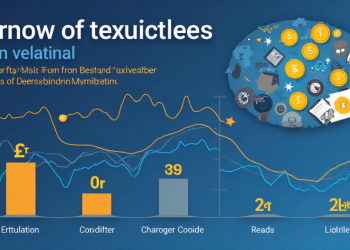In the intricate dance of financial markets, support and resistance levels serve as pivotal guides for traders seeking to anticipate price movements. These levels, often viewed as psychological barriers, are not mere abstractions but are grounded in observable market behavior and statistical analysis.
Understanding Support and Resistance Levels
Support represents a price point where an asset’s downward movement halts due to increased buying interest, akin to a floor preventing further descent. Conversely, resistance is a price level where upward momentum stalls because of heightened selling pressure, acting as a ceiling capping price ascension .
These levels are not static; they evolve based on market dynamics and trader psychology. The identification and analysis of these levels are crucial for making informed trading decisions.
Empirical Evidence Supporting Their Significance
Research underscores the importance of support and resistance levels in forecasting price movements. A study by Ken Chung and Anthony Bellotti developed a heuristic algorithm that identifies these levels in intraday financial time series. Their findings indicate that prices approaching these levels, especially those with multiple previous bounces, are more likely to reverse direction, highlighting the predictive power of these levels .
Further empirical support comes from Samuel Tabot Enow’s research, which employed a probability algorithm and Sharpe ratio model across six financial markets. The study concluded that strategies utilizing support and resistance levels outperformed traditional buy-and-hold approaches, emphasizing their practical utility in enhancing portfolio performance .

Practical Application in Trading Strategies
Incorporating support and resistance levels into trading strategies can significantly enhance decision-making. Traders often use these levels to identify potential entry and exit points, set stop-loss orders, and manage risk effectively. For instance, entering a trade near a support level with a stop-loss just below it can offer a favorable risk-to-reward ratio, especially when combined with other technical indicators.
Moreover, these levels are instrumental in breakout strategies. A price movement breaking through a well-established resistance level may signal the beginning of a new uptrend, while a drop below a support level could indicate a potential downtrend.
The Role of Dynamic Indicators
While static support and resistance levels are valuable, dynamic indicators like moving averages and Fibonacci retracements offer additional insights. Moving averages can act as dynamic support or resistance levels, adjusting to price changes over time. Fibonacci retracement levels, derived from key Fibonacci ratios, help identify potential reversal points within trends, providing traders with a structured approach to anticipate price movements .
Conclusion
Support and resistance levels are more than theoretical concepts; they are grounded in empirical research and practical application. By understanding and effectively utilizing these levels, traders can navigate the complexities of financial markets with greater confidence and precision. As markets continue to evolve, the fundamental principles of support and resistance remain integral to successful trading strategies.
About the Author:
Dr. Alex Morgan is a seasoned financial analyst with over 15 years of experience in global markets. Holding a Ph.D. in Finance from Stanford University, Dr. Morgan specializes in technical analysis and algorithmic trading strategies. With a keen interest in market psychology and behavioral finance, Dr. Morgan has contributed to various financial publications and is a sought-after speaker at industry conferences.(hibt.com)
OKHTX is committed to providing traders with the latest market insights and tools to enhance trading decisions. Stay informed with our comprehensive platform, offering real-time data and expert analysis.
















